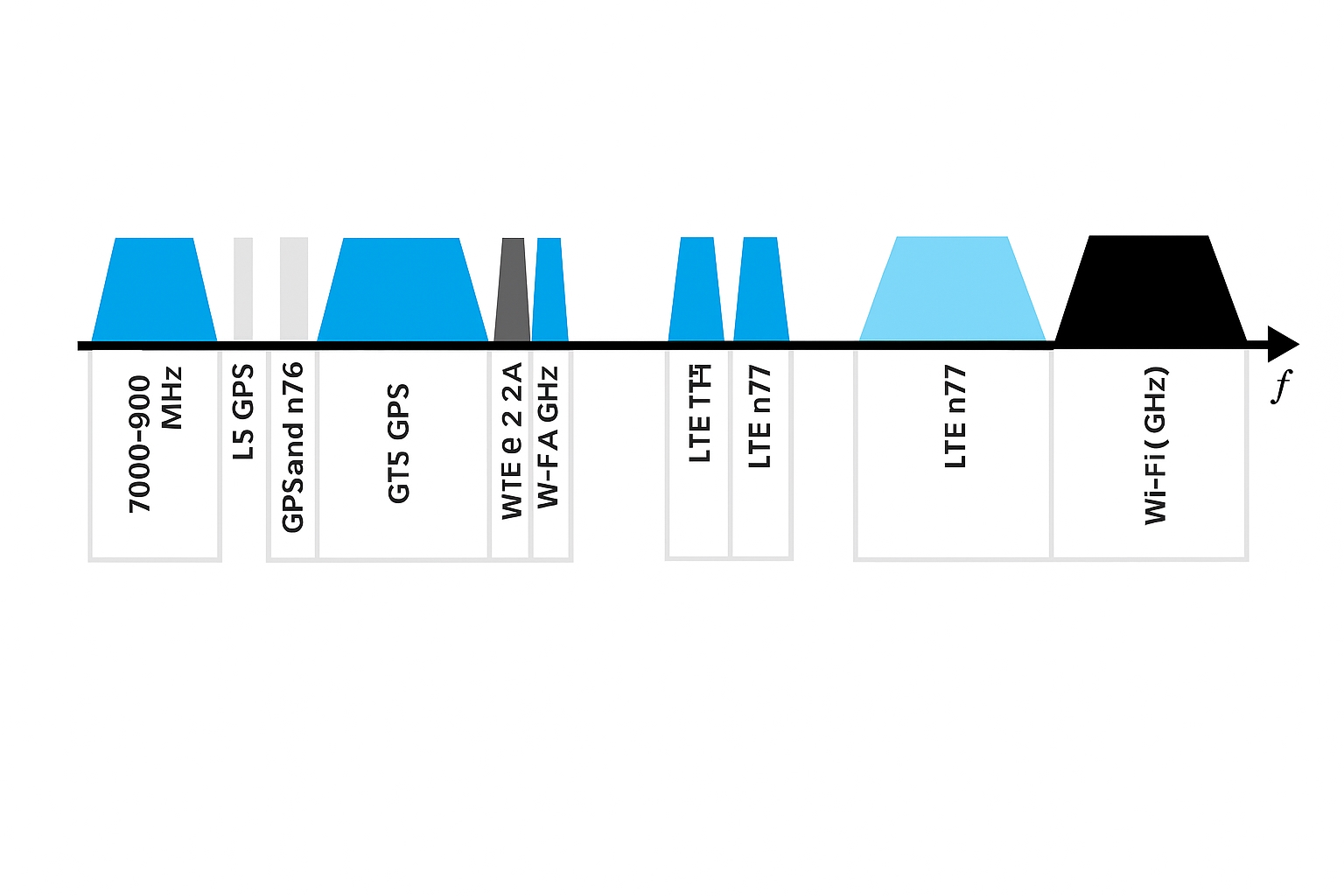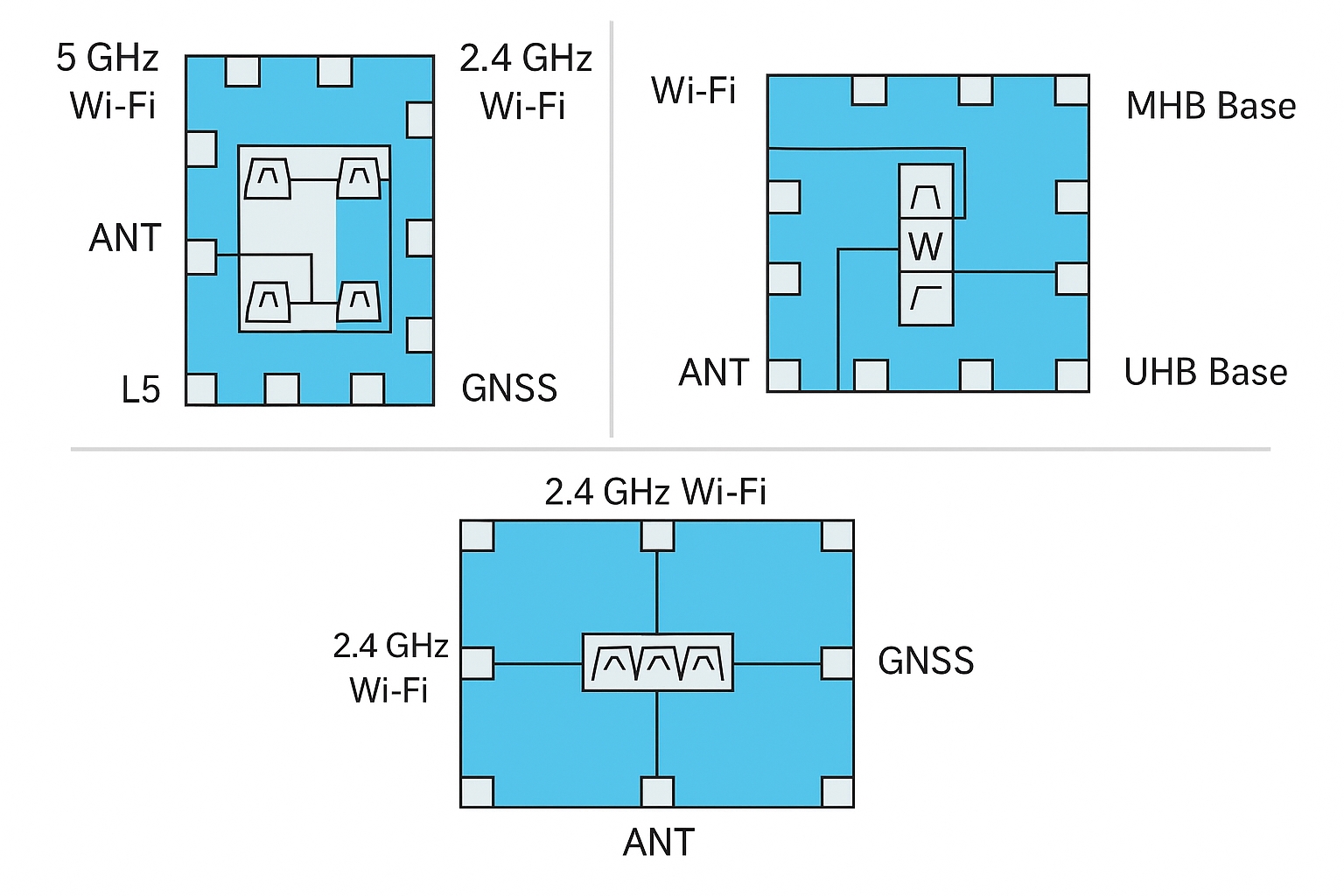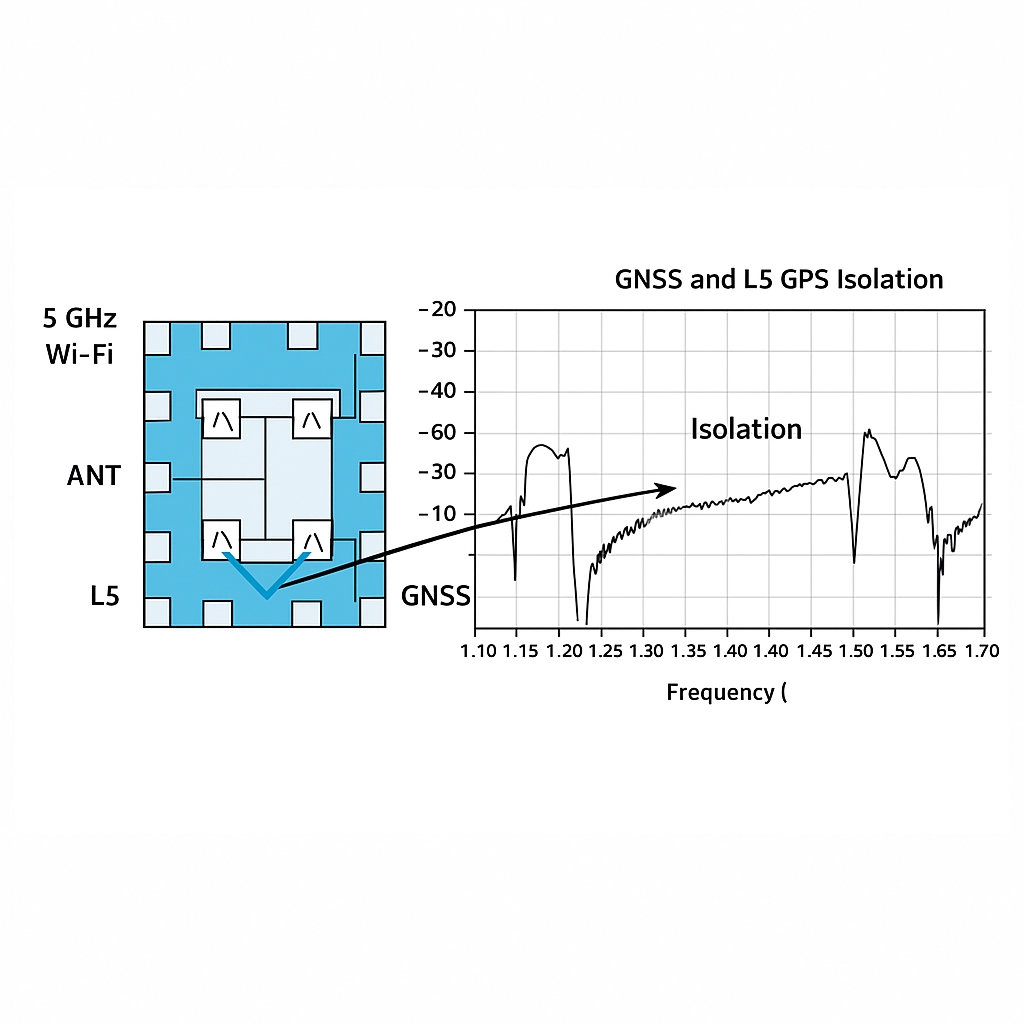Overview
This article is part of a Knowledge Refresher series that highlights selected Qorvo topics and interprets them in the context of the industry.
Device manufacturers face an architectural choice. They can add more antennas in ever-smaller device volumes, which can reduce antenna performance and harm overall device operation, or they can adopt antenna multiplexers. Antenna multiplexers reduce the need for additional antennas while meeting coexistence filtering and insertion loss requirements.
Why modern devices use antenna multiplexers
An antenna multiplexer is used near the antenna to reduce complexity, while a multiplexer is closer to the RF front end (RFFE), near the power amplifier (PA).
Antenna multiplexers address a key challenge for wireless device manufacturers in 5G systems: as industrial and mechanical designs evolve and available antenna area shrinks, RF complexity increases sharply. By using antenna multiplexers, manufacturers can support new 5G bands, 4x4 MIMO, diversity features, and other requirements with fewer antennas, without changing existing device form factors or functionality.
In mobile Wi-Fi applications, antenna multiplexer filters play an important role in reducing design complexity and enabling coexistence. They also help provide high isolation, lowering isolation requirements on the antenna design itself and allowing the use of lower-cost antennas. As a result, RFFE isolation no longer needs to rely entirely on antenna design and shielding, which can reduce antenna and shielding costs by up to 20%.
Adding new cellular and non-cellular bands increases the total number of RF paths in wireless devices such as smartphones, automotive systems, and Wi-Fi gateways. For example, a typical 5G smartphone that supports mmWave and UWB bands can have twice the number of RF paths compared with a legacy 4G phone. Many modern phones require six or more antennas to support primary cellular and various receive functions. Each RF path must connect to an antenna, but with limited space it is often impossible to double the antenna count.
Increasing antenna count also forces antennas closer together, reducing antenna-to-antenna isolation. This can cause coupling-related issues and increase the likelihood that nonlinear elements in the RF front end will degrade receiver sensitivity.
Figure 1: Frequency band overlap
Figure 1 shows multiple bands and how tightly they sit next to one another. For example, Wi-Fi 2.4 GHz and GPS L5 fall between low and mid-high cellular bands.

Antenna multiplexers help these individual bands coexist. They allow a single antenna to carry a wide bandwidth, reducing antenna count and complexity for engineers. The antenna multiplexer then divides that wide bandwidth into multiple bands. Without an antenna multiplexer, more antennas and switches would be required.
Antenna multiplexers play a key role in separating low, mid, and high cellular bands, Wi-Fi, and GPS (L5 and L1) signals while helping to eliminate interference and reduce system loss. The upper smartphone image shows many individual filters on different antennas and three separate antennas in the top-left image. The lower smartphone image shows how an antenna multiplexer can reduce complexity, component count, and size. As illustrated, using an antenna multiplexer can reduce antenna count from 3 to 1 and component count from 4 to 1; in another configuration it can reduce component count from 4 to 2. This demonstrates how antenna multiplexers simplify system design.
Benefits for system and module designers
Antenna multiplexers offer several benefits for system and module designers. They reduce the number of required antennas while maintaining or improving system-level performance and minimizing sensitivity degradation. They also increase design flexibility to support changes in architecture and industrial design. Using antenna multiplexers, devices such as smartphones can use existing antenna area more efficiently and add support for new bands without impacting current form factor or functionality.
Technical details of antenna multiplexers
With the reasons for using antenna multiplexers established, the following sections describe how they work and explain multiplexer types and isolation characteristics.
1) Types of antenna multiplexers
Several antenna multiplexer variants that all use a single shared antenna. For example, the triplexer in the top-right splits the signal to a single antenna into Wi-Fi, mid cellular, and UHF bands while providing the out-of-band (OOB) suppression needed for optimal coexistence. The other multiplexer examples in Figure 2 perform similar functions, addressing cellular networks, Wi-Fi, and GNSS. Various combinations of antenna multiplexer filters can be implemented in a system.

2) Understanding antenna multiplexer isolation
Like multiplexers, antenna multiplexers need high isolation between filters and frequency bands. Figure 3 shows measured isolation between a GPS L5 filter and a GNSS filter within an antenna multiplexer.

The right-hand image illustrates the signal isolation between two filters integrated within the same package. Typically, acoustic-wave-based filters offer the best performance for antenna multiplexers because they provide low insertion loss, multi-band coexistence with targeted OOB suppression, and high isolation between RF frequencies sharing a single antenna. They also support the high frequencies required for 5G, Wi-Fi, and UWB.
 ALLPCB
ALLPCB








